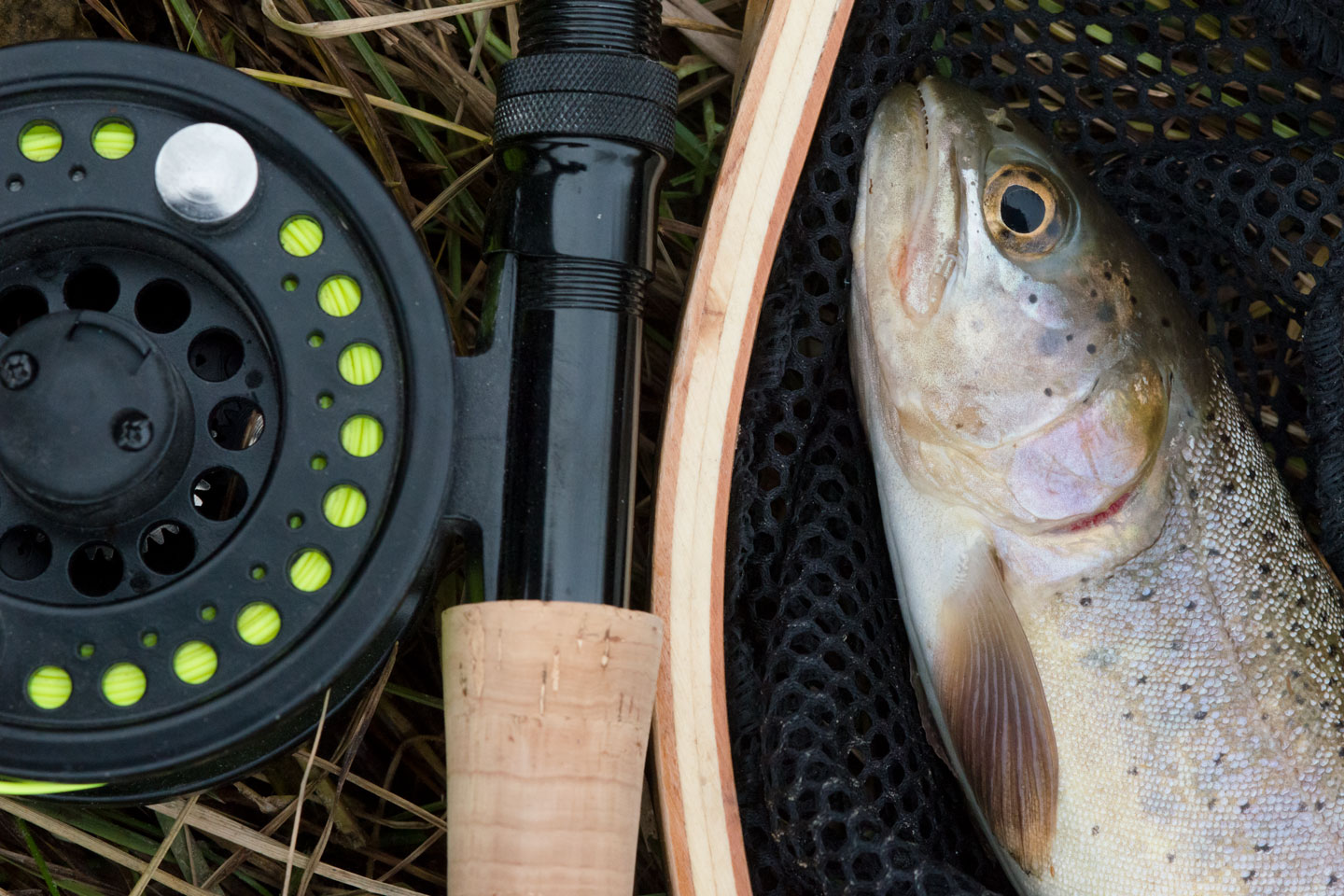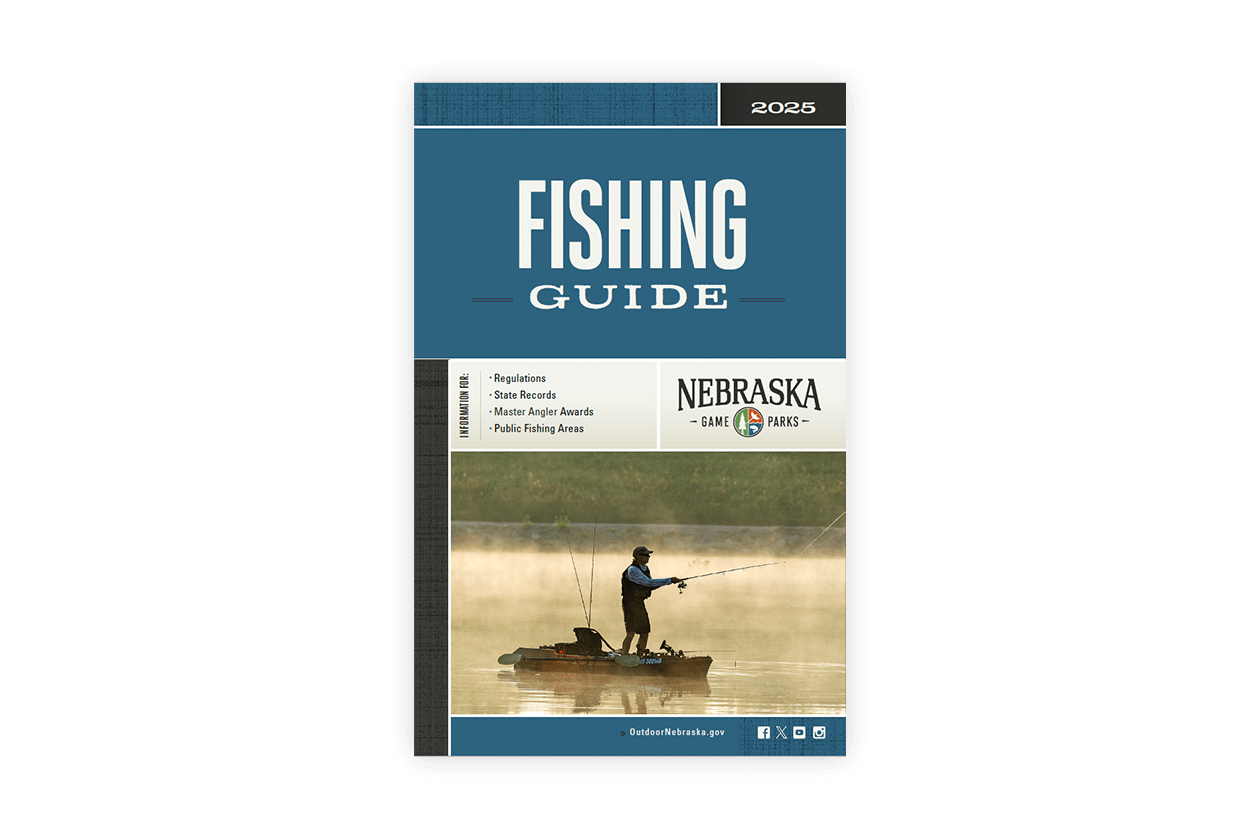Catfish ID
Ameiurus melas
Also known as: bullhead
Description: A chubby, scaleless fish having an adipose fin, 8 barbels (those under mouth black in color) that are used to locate food, and a slight notch on the rear margin of the tail. Many anglers have the misconception that the whiskers (barbels) can sting them. What have to be avoided are the hard spines (one in the dorsal fin and one in each pectoral fin) that can inflict a puncture wound if the fish is mishandled. Bullheads will overpopulate and compete with other fish if predators are lacking. When it becomes overpopulated, its bottom feeding activity stirs up bottom sediments – making the water muddy. Primarily feeds on immature aquatic insects, small crustaceans, plant material and an occasional small fish. Often caught by anglers.
Family: Catfish
Type: Commercial Fish
Range: Statewide
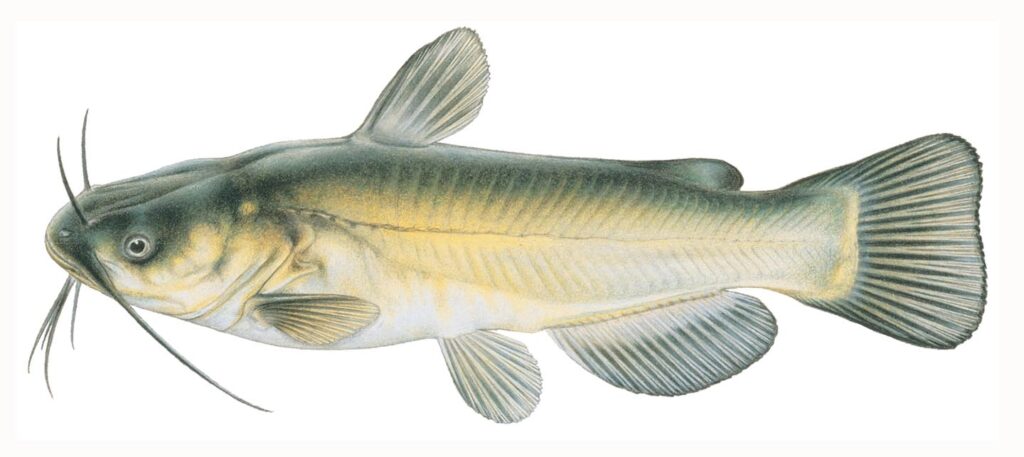
Ictalurus furcatus
Description: A scaleless, bluish-silver fish having no dark spots, an adipose fin, 8 barbels that are used to locate food, and a deeply forked tail. Its anal fin has more than 30 rays with a straight margin. Many anglers are mistaken by thinking the whiskers (barbels) can sting them. What they have to avoid are the hard spines (one in the dorsal fin and one in each pectoral fin) that can inflict a puncture wound if the fish is mishandled. Primarily feeds near or on the bottom. Mainly consumes live food items, including fish, invertebrates, fingernail clams and freshwater mussels.
Family: Catfish
Type: Sport Fish
Range: Missouri River; stocked in a few reservoirs in eastern and central Nebraska
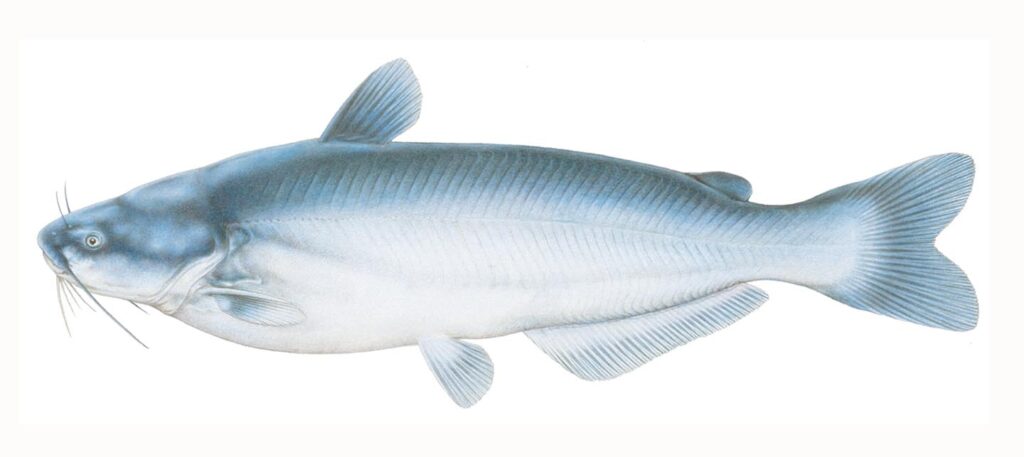
Ameiurus nebulosus
Also known as: bullhead
Description: A scaleless, mottled-colored, chubby fish having an adipose fin, 8 barbels (those under mouth dusky or black colored) that are used to locate food, and a slight notch on the rear margin of the tail fin. Many anglers are mistaken by thinking they can be stung by the whiskers (barbels). What they have to avoid are the hard spines (one in the dorsal fin and one in each pectoral fin) that can inflict a puncture wound if the fish is mishandled. Bottom-feeder, primarily eating immature aquatic insects and crustaceans.
Family: Catfish
Type: Commercial Fish
Range: Rarely found in the state.
Ictalurus punctatus
Also known as: fiddler
Description: An olive-brown or slate-blue, scaleless fish having dark spots (especially on small fish), an adipose fin, 8 barbels that are used to locate food, and a deeply forked tail. Its anal fin has 24-29 rays with a rounded margin. Breeding males become dark blue and are often misidentified as a blue catfish. Many anglers are mistaken by thinking they can be stung by the whiskers (barbels). What they have to avoid are the hard spines (one in the dorsal fin and one in each pectoral fin) that can inflict a puncture wound if the fish is mishandled. Primarily bottom-feeder, consuming living or dead items. Diet is varied and includes fish, crayfish, insects, mollusks, and plant material. One of the top five commonly sought-after sport fish in the state.
Family: Catfish
Type: Sport Fish
Range: Statewide
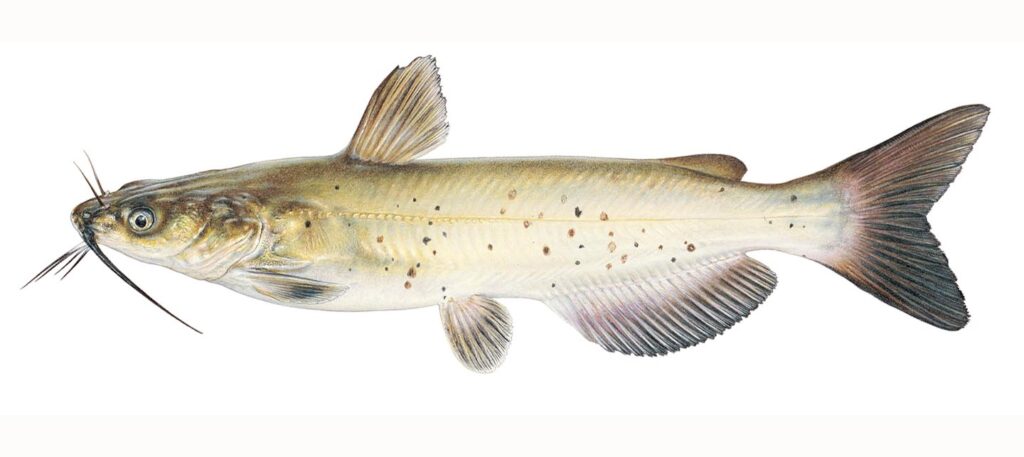
Pylodictis olivaris
Also known as: flathead, shovelhead, yellow cat
Description: A scaleless fish having a broad flat head with a projecting lower jaw, an adipose fin, 8 barbels that are used to locate food, and a tail fin with a squarish margin. Pale yellow to light brown colored, often mottled with dark brown or black if from clear water. Many anglers are mistaken by thinking they can be stung by the whiskers (barbels). What they have to be aware of are the hard spines (one in the dorsal fin and one in each pectoral fin) that can inflict a puncture wound. Primarily a nocturnal predator, feeding at or near the bottom – rarely eats dead or decaying matter. Smaller flatheads mostly eat aquatic insects while larger flatheads primarily consume fish and crayfish.
Family: Catfish
Type: Sport Fish
Range: Eastern and southwestern Nebraska.
Noturus flavus
Description: A small, slender, scaleless fish having an adipose fin that is not a flap-like lobe, 8 barbels that are used to locate food, and a tail fin with a squared margin. The whiskers (barbels) are unable to sting; however, if the fish is mishandled, the hard spines (one in the dorsal and one in each pectoral fin) can inflict a puncture wound and a mild venom that causes a painful reaction. Primarily feeds on immature aquatic insects, along with occasional small fish and crayfish.
Family: Catfish
Type: Non-Game Fish
Range: Can be found in streams and rivers across the state; however, it is rarely captured or even seen.
Noturus gyrinus
Also known as: madtom
Description: A small, chubby, scaleless fish having an adipose fin that is not a flap-like lobe, 8 barbels that are used to locate food, and a tail fin with a broadly-rounded margin. The whiskers (barbels) are unable to sting; however, if the fish is mishandled, the hard spines (one in the dorsal and one in each pectoral fin) can inflict a puncture wound and a mild venom that causes a painful reaction. Usually found closely associated with cover. Diet primarily consists of immature aquatic insects, small crustaceans and fish.
Family: Catfish
Type: Non-Game Fish
Range: Can be found in streams and rivers in eastern part of the state; however, it is rarely captured or even seen.
Ameiurus natalis
Also known as: bullhead
Description: A chubby, scaleless fish having an adipose fin, 8 barbels (those under the mouth white or yellow colored) that are used to locate food, and a slight notch on the rear margin of the tail fin. Many anglers are mistaken by thinking they can be stung by the whiskers (barbels). What they have to be aware of are the hard spines (one in the dorsal fin and one in each pectoral fin) that can inflict a puncture wound if the fish is mishandled. Bottom-feeder, diet primarily consists of immature aquatic insects, small crustaceans, and plant material.
Family: Catfish
Type: Commercial Fish
Range: Eastern half of state, rare in southwest.
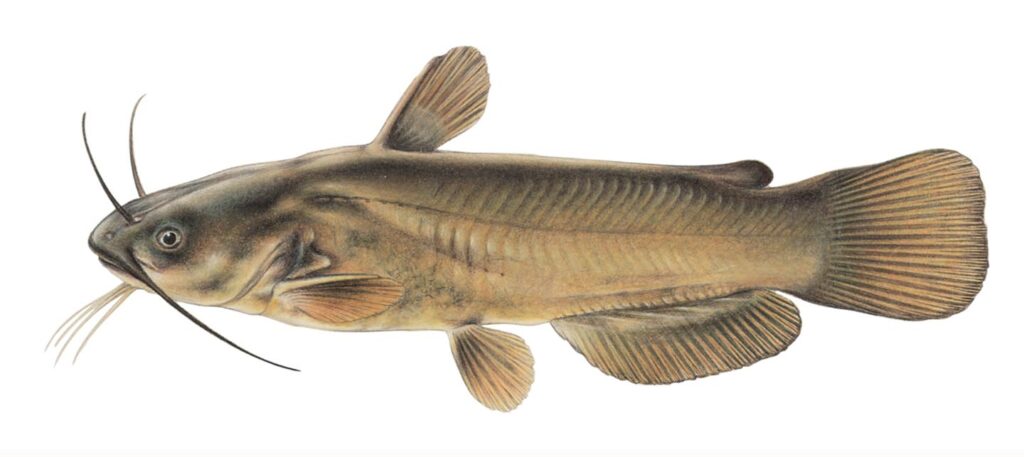
References
The Fishes of Nebraska by Hrabik, et. al (2015)
The Fish Book from NEBRASKAland Magazine (1987)Related Content
Discover other fish species and resources to angling in Nebraska.

